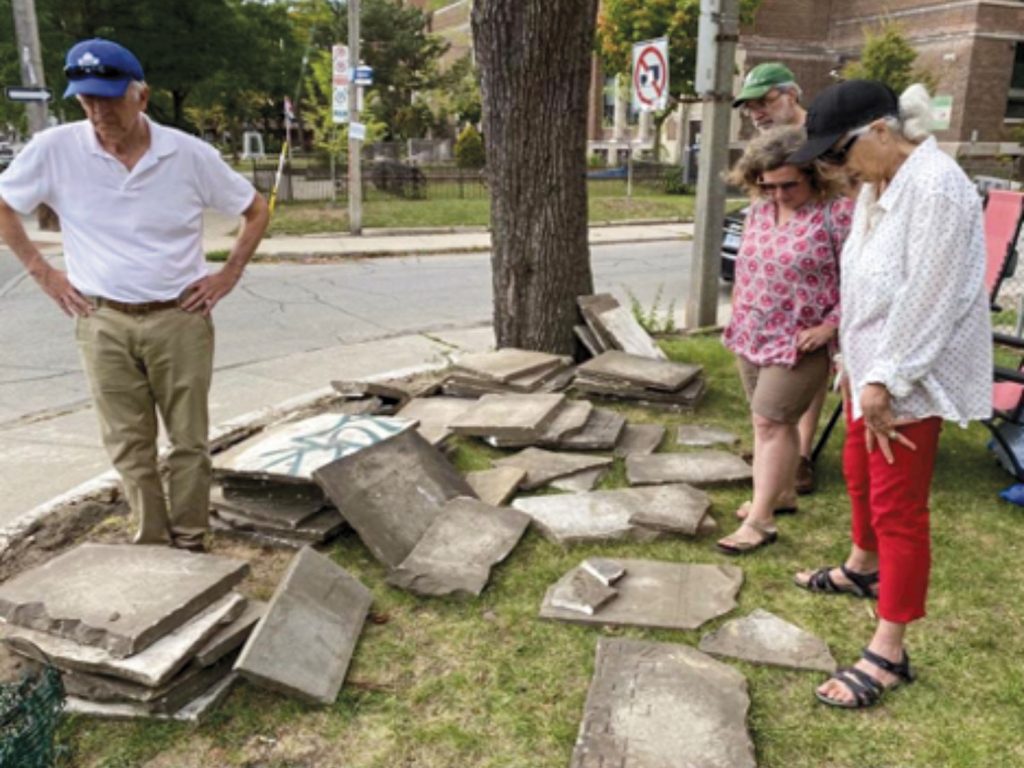Palmerston area resident traces origins of Hebrew headstones

By Margarita Maltaceva
In September, Palmerston area resident Miriam Schacter noticed Hebrew engravings on flagstones that her landlord dug up while working on her front lawn.
When she realized that the inscriptions were in fact names, she started to wonder if they had found gravestones.
“The ground beneath my feet literally changed,” she said, describing her feelings when she noticed the Hebrew lettering. Now she is looking for family members of the people whose names are engraved on the stones.
“It’s out of respect for a community that existed in the past,” Schacter said. “Their stories are important, even if this is the tiniest memorial that signifies that someone lived and someone died.”
Schacter gathered a small group of people to help her lift the heavy stones and spread them on the lawn. Some of the lettering was done by hand and resembled carving from the early 20th century.
One stone had the family name “Kirschenboim,” while the rest had Hebrew patronymics referring to the father’s name. Some of them were made of marble, and the stones had different sizes and thicknesses.
Schacter learned that unlike traditional Jewish gravestones, these stones lacked important features including dates of birth and death; as well as the Hebrew letters peh and nun, meaning “here lies.”
Howard Goldstein, the coordinator of the JGS Toronto Cemetery Project, assessed the stones and concluded that they might have been “first drafts” of headstones, which a stonemason did not complete because the family did not like them.
Alternatively, the stonemason may have been practicing his carving skills on the stones.
Goldstein does not think that the stones were ever placed on a grave.
“With the exception of any historical value, there’s no need for these stones to be treated as anything other than rubble,” he wrote by email.
Nevertheless, Schacter, who is the only Jewish person in her building, continues her search to unravel the history of the Hebrew rocks.
After she posted the pictures, a volunteer named Carolynne Veffer offered to match the only full name on the stones – Samuel Kirschenboim – with names in Jewish cemeteries.
She said she used a powerful tool called JewishGen to look for a match.
In its Worldwide Burial Registry, Veffer matched Kirschenboim‘s name with one of the graves located in Roselawn Cemetery in Toronto.
However, when Goldstein compared the headstone from Roselawn cemetery with the stone found on Schacter’s lawn, he said they bore “no resemblance.”
Although the mystery of the rocks has not been resolved, Schacter refuses to throw them away. She wants to find a proper place to keep the stones out of respect for the people whose Hebrew names are carved on them.
Schacter added she wants to create a website to post the pictures of the flagstones with translated Hebrew inscriptions.
She’s also gathered a group of six people to help her decide what to do with the stones next.
For more information or to get involved in the project, email Miriam Schacter at danceabilitiescanada@gmail.com.
—With files from Nicole Stoffman
